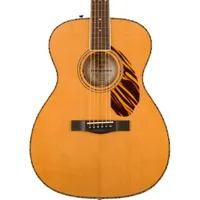Best acoustic guitars under $1,000 in 2025: Grab an all-solid acoustic for below a grand
Pro playability and superior tone are within your grasp with the best acoustic guitars under a grand
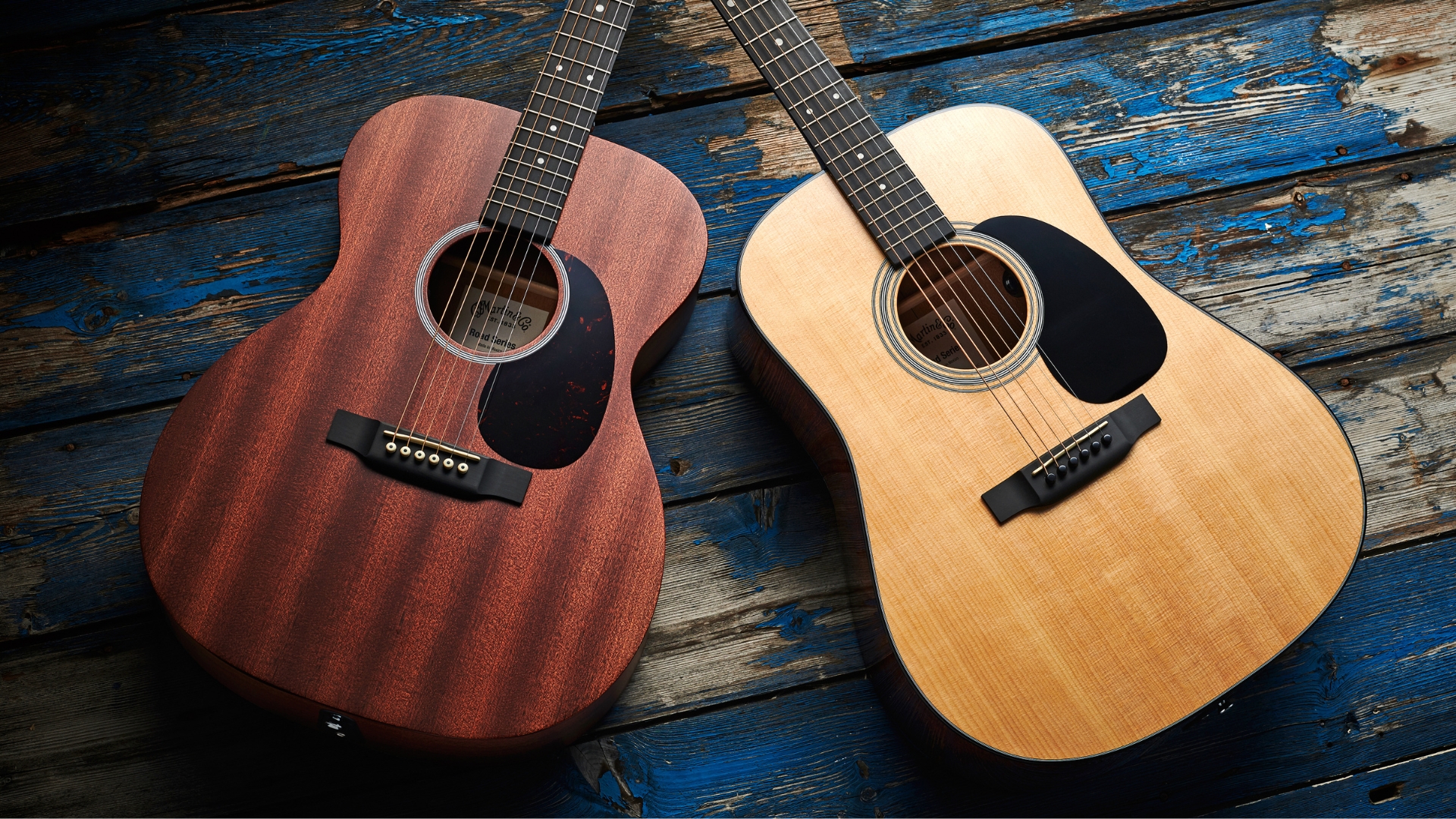
Acoustic guitars don’t have as many places to hide as their electric counterparts; after all, they are basically just pieces of wood with a hole in and strings strapped to the front... Okay, that may be an oversimplification, but it’s true that what makes an acoustic great boils down to fewer factors than many other instruments. That also means that, when constructed with the right woods in the right way, they can be far greater than the sum of their parts. And I don’t think they need to cost a fortune either, with some of the best acoustic guitars under $1,000 being among the most exciting I’ve ever played.
At this price, you’re likely to find acoustics with solid tops, and even some with full solid-wood construction, often built using some really beautiful tonewoods. Most manufacturers will also cover a number of different sizes and body shapes, so you’re unlikely to be limited in that department, and there’s bound to be something that fits your specific desires.
If you want a great all-around option, then go have a look at the Epiphone 'Inspired by Gibson' Hummingbird, which features an all-solid wood construction for less than $1,000. For gigging guitar players the all-solid Martin Road Series D-10e is an excellent choice, and if you prefer a more traditional acoustic, go check out the Guild D-140, a top-tier dreadnought also with all solid woods.
If you're new to buying an acoustic guitar, I highly recommend you check out my how to choose section, which pulls on decades of playing experience and ten years in music retail. I've also curated all the most common questions I've been asked over the years in our FAQ, and decoded all the guitar-specific terminology in my glossary of key terms.
Guitar Player’s Choice
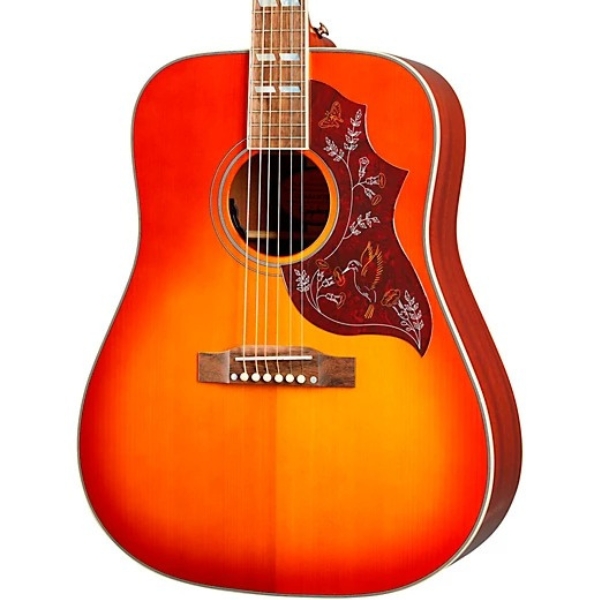
My top choice for the majority of players is the Epiphone 'Inspired By Gibson' Hummingbird. With its all-solid wood construction, classic looks and superb playability, it’s a great-sounding guitar that works well for so many different styles of music.

Another classic acoustic boasting the ubiquitous dreadnought body shape is the Martin D-10E. It’s made for life on the road and will provide you with great acoustic tones night after night.
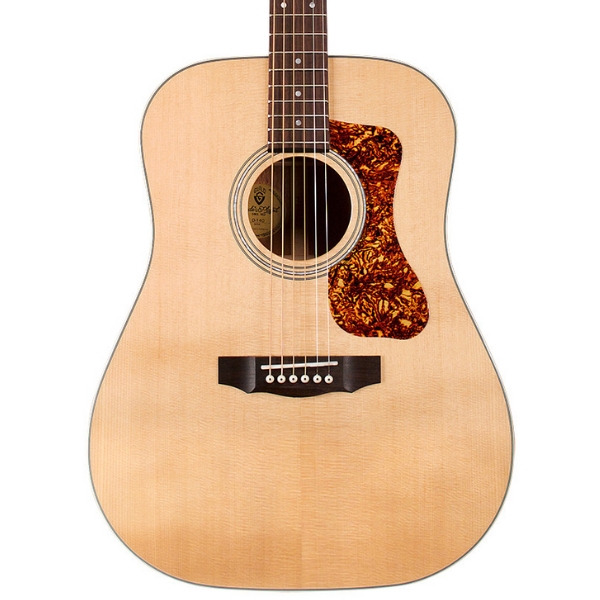
With an all-solid wood construction and no electronics, the Guild D-140 is a great acoustic guitar for those who want a more traditional acoustic experience. It delivers a lovely sound and great playability, making it excellent value for money.
Best overall
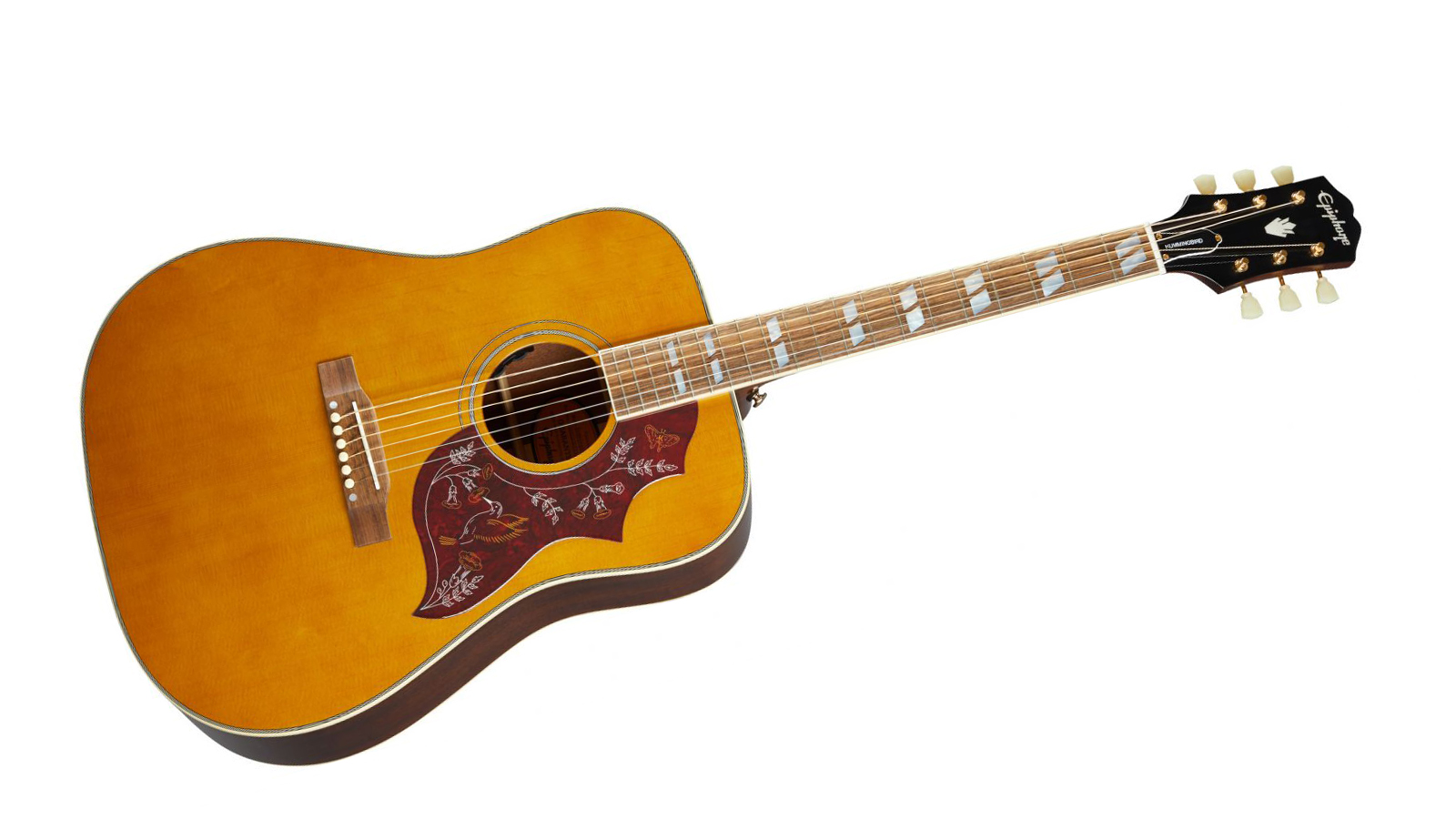
1. Epiphone ‘Inspired by Gibson’ Hummingbird
Our expert review:
Specifications
Reasons to buy
Reasons to avoid
✅ Buy if you want a premium acoustic without the price tag: This Epiphone model gives an all-solid construction for below $1,000.
❌ Avoid if you don’t like your acoustics too showy: The Hummingbird is many things, but subtle isn’t one.
Overview: The Hummingbird is probably one of the most famous acoustic guitars of all time thanks to its distinctive looks and a list of players that you could confuse for a list of alumni from the rock and roll hall of fame. With everyone from Keith Richards to Chris Cornell wielding the original Gibson, Epiphone has now put this classic guitar firmly in the grasp of any player.
Build quality: The ‘Inspired by Gibson’ range is intended to deliver Gibson design ethos and playability without the associated price tag. This means the Hummingbird has a completely solid wood construction, a feature normally reserved for acoustics twice the price, and the rest of its build equally punches above its weight.
Playability: Epiphone has also ensured that their Hummingbird plays as close to a Gibson as possible too, with features such as the gold Epiphone Deluxe tuners and bone nut and saddle making tuning stability rock solid. The rounded C neck will feel familiar to any Gibson user thanks to its 12-inch radius, and single note riffs and chord work feel supremely comfortable. To top it all off, Epiphone sends it from the factory with a setup included, so it should feel pretty perfect straight out of the box.
Sounds: Tonally it delivers a rich sound with plenty in the low range, a characteristic of dreadnought-sized guitars. Despite this ample bottom end, the Hummingbird is remarkably well-balanced with absolutely no boxiness. As an added bonus, the Fishman Sonicore under-saddle pickup means you can take those well-balanced tones to the stage with ease.
Best for gigs
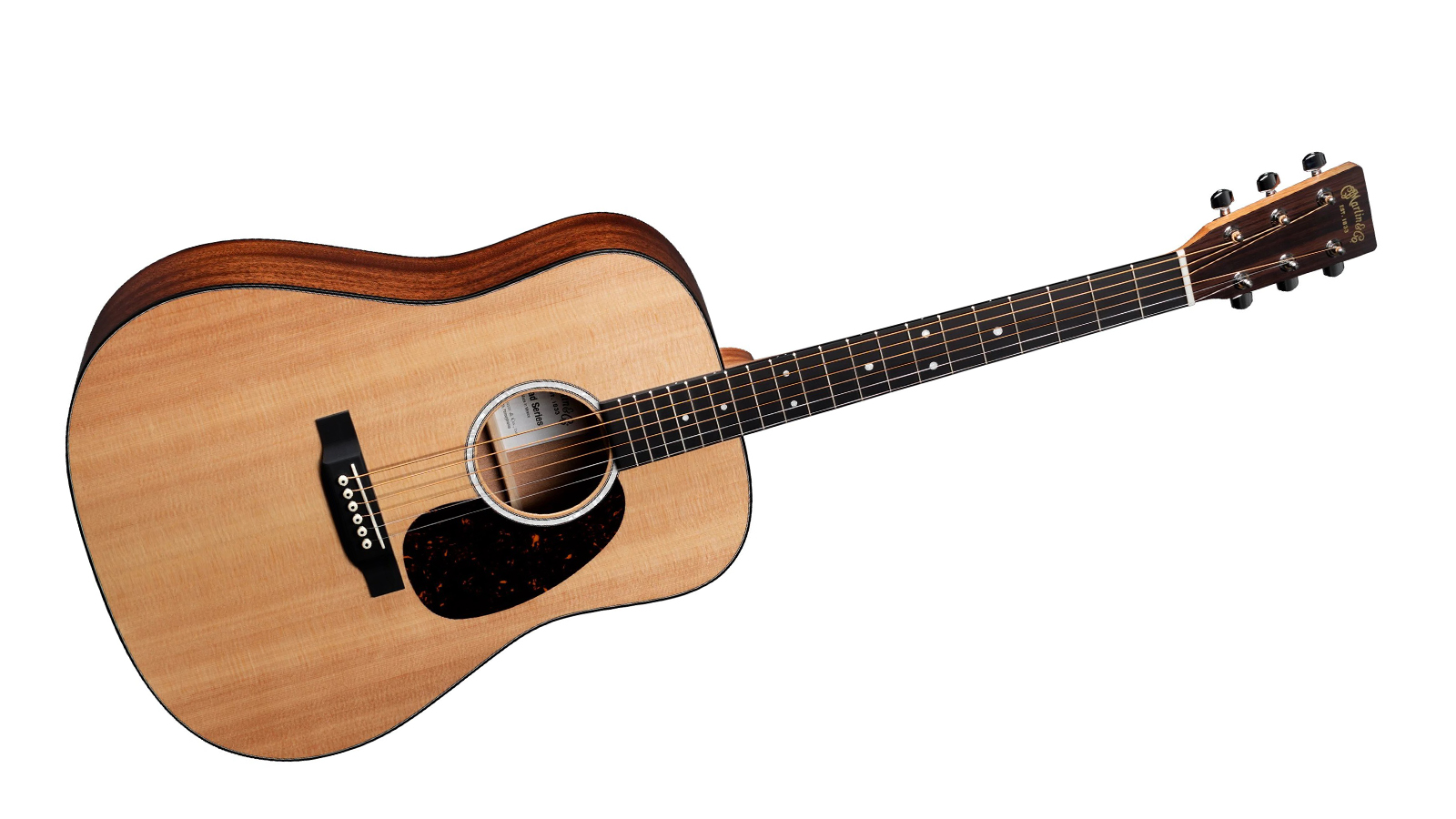
2. Martin Road Series D-10e
Our expert review:
Specifications
Reasons to buy
Reasons to avoid
✅ Buy if you want a gigging acoustic: This Martin guitar delivers supreme sound and playability without having to pay thousands of dollars.
❌ Avoid if you want a solid wood fingerboard: The Richlite used is fine, but ebony or rosewood would be much nicer.
Overview: Martin Guitars is known for producing super-high-end, premium acoustics, many of which have been the choice of the greatest acoustic guitarists of all time. They also have a number of guitars that aren’t quite as high-end, but that doesn’t mean they don’t have that classic Martin quality and craftsmanship, and they come with a much more appealing price.
Build quality: Their Road Series is designed for regularly gigging musicians, providing great electronics, instant playability, and hardware that will stand up to the rigors of the road. With a solid wood construction, the D10e delivers a premium tone without the price tag.
Playability: One of the best features of this guitar is the hand-rubbed ‘Performing Artist’ neck, giving you a played-in feel from the off that will have you feeling immediately at home. Combined with the excellent MX-T onboard electronics, you’ve got a guitar that’s gig-ready from day one.
Sounds: The sound of this guitar is very warm, lending itself well to powerfully strummed chords and harsh pick attacks. It’s a powerful tone but never feels too boomy or unbalanced in the low end, to which some dreadnoughts are susceptible.
Best dreadnought

3. Guild D-140
Our expert review:
Specifications
Reasons to buy
Reasons to avoid
✅ Buy if you want a balanced acoustic: This dreadnought size acoustic is the perfect balance between playability, projection, and volume.
❌ Avoid if you want to play through a PA: This Guild doesn't have any onboard electronics, so avoid if you're looking to gig without miking up.
Overview: Despite not being the biggest name on this list, Guild has some serious heritage, with all-star names like Nick Drake, Tom Petty, and Jeff Buckley all having used Guild acoustics across many of their legendary tracks and live performances. With its quality, I wouldn’t bet against the D-140 finding its way into tomorrow’s superstar’s hands.
Build quality: Made with solid woods throughout and put together with an excellent fit and finish, the D-140 just felt like a fantastic acoustic guitar from the moment I picked it up. With some acoustics you can tell that they will age particularly well and this is certainly one of those guitars.
Playability: The neck has a ‘C’ profile which will feel instantly familiar to most players. It’s got a relatively wide nut, so will suit fingerstyle well, but isn’t so wide that you can’t comfortably fret barre chords, so strummers shouldn’t worry. Combine that with a premium bone nut and saddle, and you’ve got yourself a very capable acoustic.
Sounds: With no electronics, the D-140 is relying solely on its natural sound to project well and it certainly meets that brief. It’s got a throaty midrange and chime-like high end, with plenty of oomph in the lows.
Best compact

4. GS Mini-e Mahogany
Our expert review:
Specifications
Reasons to buy
Reasons to avoid
✅ Buy if you want a great quality travel acoustic: The small size and great sound of the GS Mini have made it a modern classic for a reason.
❌ Avoid if you have particularly large hands: The reduced scale length may feel a bit more noticeable for players of larger proportions.
Overview: Any model within Taylor’s GS Mini series can pretty much automatically be seen as one of the best acoustic guitars under $1000, particularly if you’re looking for something compact yet punchy.
Build quality: Whilst the GS Mini-e is more compact than a full size concert guitar, don’t think of this as a kid’s guitar – It’s still got a fair amount of volume available and Taylor hasn't skimped on the build quality. It’s also not quite as small as a 3/4 guitar, so players who are used to full-sized instruments don’t need to readjust too much. It also comes shipped with a quality gig bag, which I always think shows you that the manufacturer really cares about the instrument. It might sit towards the bottom of their range, but Taylor has put real attention to detail into this guitar.
Playability: Smaller acoustics have a reputation of being a bit limited, but the GS Mini-e responds well to fingerpicking and strumming, and I can see this being a really good addition to most players’ arsenal regardless of the style you play. The on-board ES-B pickup system lets you plug in and play when you need amplification too, so volume isn’t really too much of a factor.
Sounds: My pick of the series is the GS Mini-e mahogany as it has a lovely warm, woody tone with plenty of dynamics. It’s got a solid mahogany top which is paired nicely with layered sapele back and sides, which helps brighten things up a touch.
Best cutaway

5. PRS SE Angelus A40E
Our expert review:
Specifications
Reasons to buy
Reasons to avoid
✅ Buy if you want an acoustic that feels a lot like an electric: With PRS's wide-fat neck profile and generous cutaway, this is a great acoustic for reaching the upper frets.
❌ Avoid if you want solid woods throughout: The SE Angelus A40E uses laminates on the back and sides.
Overview: Despite its comparatively recent foray into acoustic guitar building, PRS guitars has used all of its design ingenuity to provide a high-quality acoustic guitar range that delivers without breaking the bank. The SE Angelus A40E gives you slinky playability with trademark PRS looks.
Build quality: Despite being part of the SE range – as are all of PRS’s acoustics barring their private stock line – this guitar still comes with all the high-end PRS appointments, giving it the look of a much more expensive instrument with the trademark bird inlays and unique headstock design.
Playability: The wide fat mahogany neck comes with a low action that is super easy to play, particularly for those who typically play more electric guitars – barre chords are a breeze on this neck, and even whole step bends are possible.
Sounds: Sonically, it delivers a great midrange tone that’s very neutral, suiting fingerpickers and strummers equally well. If anything, I felt it lacked a bit of bass response, which might be a result of its laminated back and sides, but this is the most minor gripe.
Best jumbo
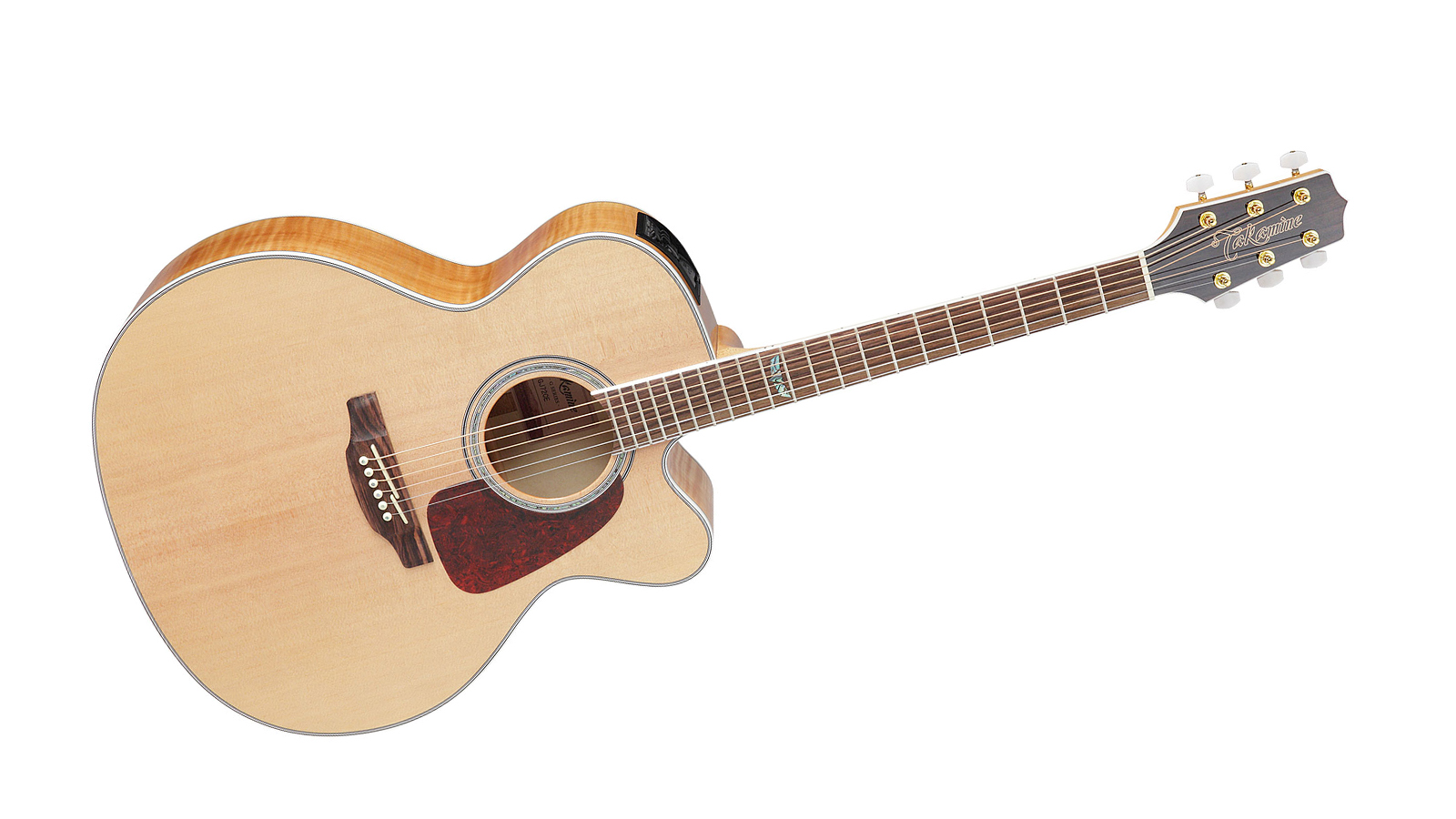
6. Takamine GJ72CE
Our expert review:
Specifications
Reasons to buy
Reasons to avoid
✅ Buy if you want a guitar that’s plenty loud when unplugged: The jumbo body means this guitar has plenty of volume, but it also has great onboard electronics to amplify it further.
❌ Avoid if you're a smaller player: The body size of this guitar will feel humongous to players with smaller proportions.
Overview: If you’re looking to get on the gigging circuit, then you can do a lot worse than Takamine’s GJ72CE electro-acoustic offering. Famed for its pickups and preamps, Takamine certainly knows a thing or two about crafting top-quality acoustics.
Build quality: Takamine is known for producing quality acoustics and the GJ72CE is no different, with a flawless, glossy finish and elegant design elements throughout, such as abalone inlays and gold hardware. This is a brand who cares about their craft and putting great acoustics in their customers’ hands – from build alone, you can tell this is a great acoustic.
Playability: The neck is quite a stocky ‘C’ shape, giving you a great playing platform with a comfortable 12-inch radius. The action is low out of the box and it feels very much electric-guitar-like with its medium frets, lending itself well to all styles of playing.
Sounds: The sticking point for some, or the thing that you will love: the GJ72CE is absolutely colossal in size. Regardless of that it delivers a well-balanced tone, with crisp and clear notes abound in the mid-range, and a nice and tight low end. It takes to strumming superbly and when plugged in, you can warm things up with the addition of some bass EQ. So it’s down to whether you find that enlarged body comfortable or not – I sure do!
Also consider
Fender Paramount PO-220E Orchestra
Solid spruce top | Solid mahogany back & sides | Mahogany neck | Ovangkol fretboard
Fender isn’t particularly well known for its acoustic guitars, but that’s not to say it has no heritage building them. In fact, the company's been making acoustic guitars since the ’60s, with both Elvis and Johnny Cash wielding the big F on their acoustic headstocks. The Paramount series refresh represents the top end of Fender acoustics, but they still sit at a seriously appealing price point.
★★★★½
Yamaha FSC TA TransAcoustic Concert Cutaway
Solid spruce top | Laminate mahogany back & sides | Nato neck | Rosewood fretboard
It’s not often you pick up an acoustic guitar and have your mind blown by it, but that’s exactly what happened when I got my hands on the Yamaha FSC TA TransAcoustic. Without plugging it in, you can have a warm wash of chorus and luscious reverb sounds thanks to its unique tech – an instant jaw-dropping feature.
★★★★½
How to choose

The sub-$1,000 acoustic guitar market is packed with incredible options that come in a huge amount of shapes and sizes. Just because there are plenty of great guitars available doesn’t mean that they’ll all be perfect for you, but I think there are a few key things that you should consider that will steer you in the right direction to acquire your ideal acoustic.
1. Body shape
You can trust Guitar Player.
Many manufacturers will produce a range of different acoustic guitar shapes that all sit at a similar price (under $1,000) but depending on your taste and playing style, a specific shape could suit you. For example, a dreadnought shape would suit players who mainly strum, whereas a parlor or concert, which have smaller bodies and a brighter tone and attack would suit fingerstyle playing better. A grand auditorium would be a good middle ground and suit somebody with an eclectic range of playing styles.
2. Do you play live?
If you play live, some acoustic guitars may be better than others. Larger-bodied acoustics are generally louder unplugged, but that may be less of an issue if you buy a guitar with an integrated pickup and can plug into a PA system or amplifier. If you travel a lot for your shows, a smaller acoustic may be preferable as it is easier to transport. Finally, you may want to buy an acoustic that comes with a hard case as standard as these can be expensive when bought later on.
3. How important is brand name to you?
The third thing I think you should consider – and it is at the bottom of the list for a reason – is the brand you want to buy. The reason it’s at the bottom is because I think it’s far more important to get the right instrument for you (size, body shape, and with/without electronics) rather than simply going for an acoustic because it’s a brand you think is best.
There are so many brands that produce superb acoustics for $1,000 or less, so don’t become brand blind at the expense of something that would suit your needs much better. If you’re unsure, all the brands included on this list are great manufacturers to go with.
FAQs

Should I go for a solid top or laminate?
Wherever possible, I would recommend going for a solid top acoustic guitar. The solid wood has a better resonance and often has a warmth to it that can be somewhat missing from laminate topped acoustics – though the difference is, admittedly, subtle.
That being said, at this price point, it’s important to be sensible about what you can reasonably get in an acoustic, and going for a solid-topped acoustic at the expense of other features you may like might not be a tradeoff you are willing to make. As a general rule, if you can, go for a solid top, but compromise on laminate back and sides.
Which body shape should I choose?
The body shape is down to many factors, including your own body shape and size, which may better suit a bigger or smaller body shaped acoustic. It also depends on what you’re using your guitar for, if you travel regularly and want something compact, a parlor-style guitar is more travel-friendly due to its reduced size. Alternatively, if you are likely to play unplugged regularly, a larger dreadnought body will have more volume and a beefier sound, capable of filling larger rooms than comparatively smaller-bodied acoustics.
Do I need an acoustic electric?
An acoustic electric is a nice thing to have, it means that regardless of the environment, you should have ample volume to get over a crowd. It also doesn’t impact the playability of your acoustic in normal acoustic environments – there isn’t really a downside.
However, If you’re not sure that you definitely need an acoustic electric and buying a guitar with integrated electronics might push you beyond your budget, or mean you need to buy a cheaper acoustic to allow for the cost of the electronics, don’t feel you need to. You can always buy an aftermarket pickup/preamp system and fit it later on if you find that you need to. Alternatively, you can always just get hold of a good acoustic guitar microphone and that can do the same job (amplifying your acoustic).
Which brands are the best below $1,000?
$1,000 and below is a really interesting price bracket. You’re not yet into the super-premium acoustic world, but it’s still enough budget to get hold of a really solid acoustic instrument. While the premium manufacturers (e.g. Taylor/Martin) do have guitars that fall into the sub-$1,000 category and retain some of the fantastic DNA of their more expensive siblings, I’d argue that brands such as Yamaha and Guild, which make guitars that sit in the budget category upwards are really well positioned to take on those ‘premium’ brands.
Personally, I would always prefer to have a guitar that sits near the top of a manufacturer’s range, than one that sits near the bottom of it, so I would always say look beyond the headstock, because prestige brands may not always be the best bang for buck or meet your specific needs.
What should I look for in the neck shape?
Preferred neck shape is a personal choice with your hand size playing a massive part. Common neck shapes include C, U, and V profiles, though others are available. C-shape necks are among the most common and often seen as the most comfortable across a range of playing styles. A U-shape neck is deeper and thicker and may be found on larger-bodied acoustics.
A V profile neck can be sharper in the hand and may suit fans of vintage-style necks and who like to rest their thumb on the back of the neck. In classical-style acoustics, neck profiles may not adhere to conventional shapes. When researching your ideal acoustic, you are likely to find that the manufacturer will describe the thickness of the neck, which will give you a good idea of whether it is suitable for you.
What will $1,000 actually get me in terms of tone?
You might be surprised at just how good a $1,000 acoustic can sound. Shop wisely and you can buy an instrument made from premium woods that sounds and plays brilliantly, with the kind of warmth that you would expect from far more expensive acoustics. Areas they may fall down on is onboard electronics and hardware, such as tuning machines, which can impact the tone, however these can be upgraded fairly easily.
Should I budget for a setup?
Many of the best acoustic guitars will come with a simple factory setup, so should be at least semi-suitable to play straight from the box. Depending on the retailer, you may even find that they will offer a setup on sale – though this is unlikely to be comprehensive. Paying for a professional setup to your specifications will mean it is perfectly tailored to your playing style, so if you can include a setup, it’s always worthwhile.
Which acoustic under $1,000 works best for fingerstyle?
When looking for an acoustic under $1,000 for fingerstyle, I would recommend narrowing your search to smaller-bodied acoustics, with wider necks, and a balanced tonal profile, rather than something that is too bass-heavy. Cutaways can be useful too, allowing the user to navigate from the top to the bottom of the neck with ease. An example of a guitar with all of these features is the PRS SE Angelus A40E, which is one of my favorite acoustics for fingerstyle.
What are the advantages and disadvantages of a cutaway?
A cutaway is fantastic for accessing the higher frets of an acoustic guitar, which are usually very difficult to reach – though it is worth noting that the heel may still prove to be a bit of an obstacle. However, any cutaway will mean that you are reducing the overall area of the body of the guitar, which can result in lower volume and bass response. You are also compromising the structure of the acoustic, which can impact the resonance of the guitar. These may be suitable tradeoffs for that extra access, however, and if you play plugged-in regularly, you may find tradeoffs are minimal to nonexistent.
Key terms
- Action: The height at which your strings sit above the fretboard. Too high and your guitar can be hard to play. Too low and you can get fret-buzz.
- Back & sides: The rear and the edges of your acoustic. These are often made of different woods from the top of the acoustic.
- Bracing: The internal wood that sits on the underside of the front of your acoustic, often around the sound hole. This adds strength and rigidity to your acoustic and can impact the tone and projection of the guitar.
- Bridge: Sitting at the base of the guitar and over which the strings are mounted. A good bridge will help keep your guitar in tune and greatly impact its resonance.
- Body shape: The name/style of your acoustic guitar’s body. There are a number of names that will refer to a specific body shape and size.
- Bout: A rounded section of the acoustic body. Most guitars have two bouts: an upper bout at the top, near the soundhole, and a lower bout at the bottom, with a “waist” in between.
- Cutaway: A section of the acoustic’s body that has been removed to allow you to access the higher ends of the fretboard with your fretting hand.
- Dreadnought: One of the most common guitar shapes, named after the historic military boats to illustrate its larger size. They are known for their enhanced volume and, often, powerful low end, coming courtesy of its bigger body.
- Fretboard: The piece of wood that sits on top of the neck and upon which your fingers push the strings down. This can be made from solid woods, such as ebony or rosewood, or composites like richlite.
- Headstock: The head of the guitar sitting at the top of the neck and where your tuning machines are mounted.
- Intonation: How accurate your guitar’s pitch is regardless of where you are on the fretboard. The intonation can be impacted by the nut and bridge.
- Jumbo: The largest body-style for acoustic guitar. They are generally rounder than dreadnoughts and have a very loud volume and deep bass. They are often associated with classic rock ‘n’ roll - think of the guitars Elvis played – as they still punch above a band and are ideal for heavy strumming.
- Laminate: A wood composite made from thin layers of wood that have been glued together. This is cheaper to manufacture with than solid wood and are often found on cheaper acoustic guitars.
- Nut: The small slotted piece of material – typically made from bone or plastic – that sits at the top of your neck and meets the headstock. The strings run between these slots, which provides one end of the vibrating length of the string.
- Parlor: A smaller-bodied guitar shape that was particularly popular in the 19th century for entertainment at home or in “parlors”. Nowadays they are often chosen due to their comfortable reduced size or for smaller players.
- Pickup: An electronic device, generally mounted under the saddle or in the soundhole that picks up the vibrations of the acoustic and converts them into an electrical signal that can be amplified.
- Saddle: A thin strip, typically made of bone or plastic, that sits on the bridge and holds the strings.
- Tonewood: The name given to the hardwoods used to construct an acoustic guitar. Particularly good tonewoods will provide your acoustic with rich tonal qualities.
- Top: The top of your acoustic guitar and the most visible part of the instrument to the crowd. The top may be made of different woods to the back and sides and is the most likely part to be solid wood.
- X-Bracing: The standard internal bracing pattern for steel-string acoustic guitars, featuring two main wooden braces (pieces of wood) that cross in an "X" shape just behind the sound hole to reinforce the strength of the top, which is subjected to high tension from the steel strings.
How we choose
At Guitar Player, we are a team of dedicated guitarists who have immersed ourselves in the world of acoustic guitars.
To compile our list of top acoustic guitars under $1000 guide update, we combine our hands-on experience, meticulous research, and insightful discussions with our editorial team. We consider a range of factors, including tonal quality, playability, build quality, aesthetics, and value for money, ensuring that we showcase the finest Taylor guitars on the market.
As passionate musicians ourselves, we understand the importance of finding the perfect instrument that resonates with your playing style and musical preferences. Whether you're a fingerstyle virtuoso, a strummer, or an all-around player, our goal is to provide reliable and informed recommendations that help you discover the best acoustic guitar under $1000 for your musical journey.
Read more on how we test gear and service at Guitar Player.
Related buyer's guides
- Save some cash with the best acoustic guitars under $500
- Best Electric Guitars Under $1,000: Our Picks From Fender, PRS And More
- You'll need one of the best pedalboard power supplies
- Get the best of both worlds with the best acoustic-electric guitars
- Take your playing to new heights with the best online guitar lessons
- Harness the dynamic warmth of the best classical guitars
- Best 3/4 acoustic guitars: Diminutive acoustics with substantial tone
All the latest guitar news, interviews, lessons, reviews, deals and more, direct to your inbox!

Matt is a Junior Deals Writer here at Guitar Player. He regularly tests and reviews music gear with a focus on guitars, amps, pedals, modelers, and pretty much anything else guitar-related. Matt worked in music retail for 5 years at Dawsons Music and Northwest Guitars and has written for many music sites including MusicRadar, Guitar World, Guitar.com, Ultimate Guitar, and Thomann’s t.blog. A regularly gigging guitarist with over 20 years of experience playing live, writing, and recording in bands, he's performed everything from jazz to djent, gigging all over the UK in more dingy venues than you can shake a drop-tuned guitar at.
